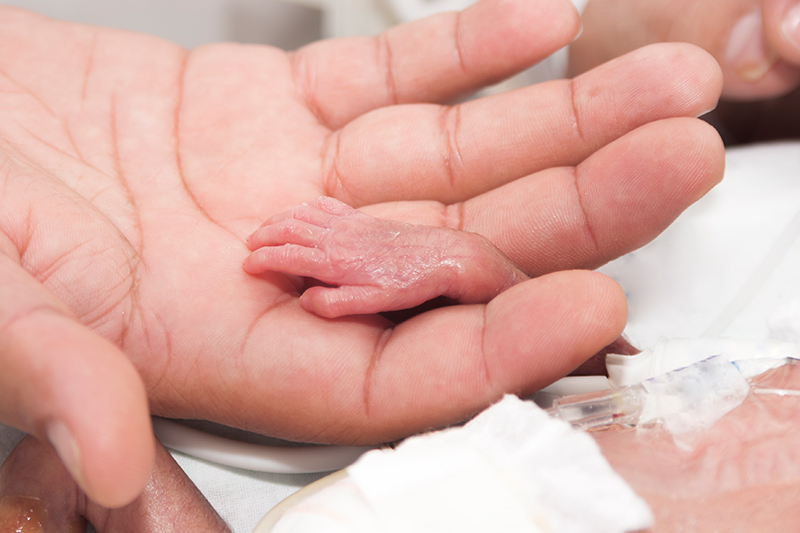
Scientific advances have greatly increased the survival of preterm babies, including those born before 28 weeks of pregnancy. For example, NICHD-funded research helped lead to clinical use of the replacement of lung surfactant, a molecule that allows the air sacs of the lung to open and close without friction. This contributed to an increase in survival rates for premature infants with respiratory distress syndrome from 5 percent in the 1960s to around 90 percent today.
But for extremely preterm infants, survival often comes at a cost—being left with permanent health problems and disabilities. The severity of these effects depends on numerous factors, including the gestational age at birth and the intensity of the treatments that the newborn requires to survive.
How early can a baby be born and not only survive but thrive? A recent study from the NICHD-funded Neonatal Research Network
highlights continued progress in saving the most premature newborns. The study included nearly 11,000 infants born between 22 and 28 weeks of pregnancy in 2013 to 2018. Overall, 78.3 percent survived to hospital discharge, an increase from 76 percent in 2008 to 2012.
As expected, the investigators observed higher survival rates for babies born later in pregnancy. While 94 percent of babies born at 28 weeks survived, only about 11 percent of those born at 22 weeks did. However, when infants born at 22 weeks were given intensive treatments aimed at saving their lives, the survival rate rose to 30 percent. Nearly half (49.4 percent) of all infants born at 23 weeks survived, a significant increase from 32.3 percent in 2008 to 2012.
While these findings are encouraging, the researchers also observed that health and developmental problems were common among babies born between 22 and 26 weeks of pregnancy, underscoring the need for continued research to optimize the long-term quality of life of these extremely preterm babies. Among a subset of survivors evaluated at 2 years of age, 29.3 percent had moderate neurodevelopmental impairment and 21.2 percent had severe impairment. Slightly more than 8 percent had cerebral palsy, 1.5 percent had vision loss in both eyes, 2.5 percent needed hearing aids or cochlear implants, and 15 percent required mobility aids such as braces, walkers, or wheelchairs.
Faced with their individual circumstances, families and healthcare providers must work together to make challenging care decisions for infants who are born extremely preterm. Studies like this one help provide them with the best available information about the survival, health, and development of these babies.
NICHD continues to fund research to reduce death and disability among premature infants. At the same time, we prioritize efforts to better understand the causes of preterm birth and develop strategies to prolong pregnancies and avoid preterm deliveries. The risk factors for preterm labor and birth are numerous and complex. Medical complications—ranging from preeclampsia to COVID-19—can increase a pregnant woman’s risk for early labor and delivery. NICHD-funded research also has shown that homelessness, exposure to police violence, and other stressful events during pregnancy are linked to higher preterm birth rates.
Despite tremendous progress, prematurity remains a major cause of infant death and disability worldwide. Our continued efforts to prevent preterm births and improve the care of premature babies globally brings us closer to our institute’s mission of promoting healthy and optimal lives for all, including the tiniest of all babies.
 BACK TO TOP
BACK TO TOP